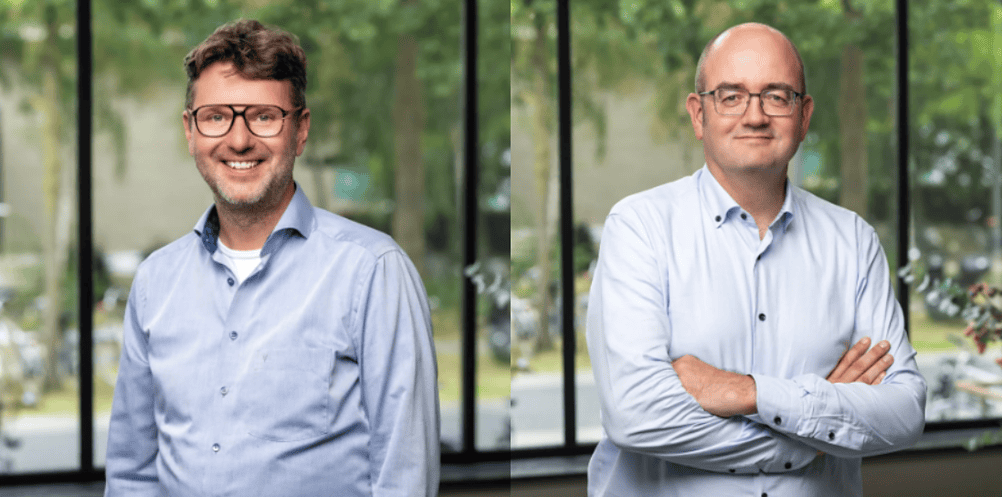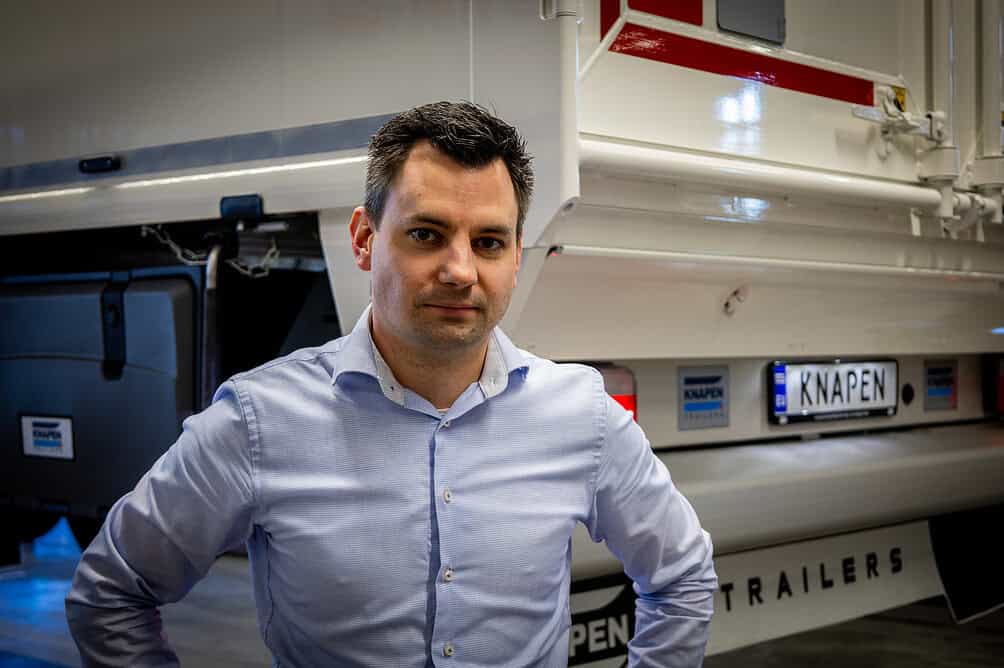
Knapen Trailers, founded by Piet Knapen in 1984, developed into the European market leader in moving-floor trailers in its early years. Along the way, the company was able to chalk up one scoop after another. Think of such impressive innovations as the well-known self-supporting construction method, Europe’s first moving floor trailer with side doors, and the EXTREME for heavy waste and scrap. The welding robots at Knapen work completely energy-neutral thanks to the plant’s solar park on the roof. The handling robots, moving molds, and all other automated processes for manufacturing the trailers are also of the most modern kind and, therefore, guarantee the highest quality.
Why should you read this?
Even successful SMEs need to continue to develop themselves in order to keep growing. This sometimes requires outside help. The collaboration between Knapen Trailers and Holland Innovative shows how that can work.
In short, we are talking about a successful company that can confidently celebrate its 40th anniversary for over 220 employees in June 2024. Still, according to CEO Ton de Haan, there is no reason to sit back. “If we want to remain the European market leader in the field of moving-floor trailers, we must continue to develop.”
For exactly that reason, De Haan and his quality manager, Joey van Lieshout, approached Holland Innovative to get their expertise in project management and lean product innovation into the heads of his employees as well. “To realize an improvement culture in your company, you have to give your people the tools to do so. And that succeeded thanks to Holland Innovative’s input.”
Academy

That input came from Hein Timmermans and Joost Brand, the first specializing in Lean, the other in Six Sigma. “Our training courses can be done both at our academy at the High Tech Campus in Eindhoven and on location. The great thing about the academy is that as a visitor, you also get the experiences of fellow professionals and then help each other further. But on-site training, as we did at Knapen Trailers, then again, has the advantage that we can include all the special elements of that specific company in the training in their safe environment and involve the entire organization.”
The latter was emphatically done at Knapen. Joey van Lieshout, who helped implement the program, notices that the entire company is still full of it, even though the training has been over for some time. “It hit like a bomb here. People underestimate the importance of this kind of knowledge and skills. And yes, sometimes, our people had to tiptoe around it all. Lean was okay, but Six Sigma was not that easy for them. Fortunately, Ton was able to motivate them well at those difficult moments.” This was also a welcome sensation for HI’s Brand and Timmermans: “Knapen is lucky to have a CEO who understands what is needed for continuous improvement, substantively and mentally. The enthusiasm with which he gets in front of the troops helped us tremendously.”
From thinking to doing

For De Haan himself, it makes no less than sense. “If you want to convince your people of the necessity of a certain change, then of course you have to act accordingly yourself. That is the only way to help your people develop further, which is essential for us as a company.” Moving from thinking to doing is crucial in this regard, he says. “Don’t dwell too long on the problems you encounter during your work, but make the leap to the solution. Mastering Lean and Six Sigma helps our organization achieve that. In doing so, we do not steer for as many green or black belts per department as you sometimes see in other large companies. I don’t do projects for the sake of projects. We do it to give people tools to help us and themselves. Not as an end in itself.”

Some moments naturally went better than others. “We are an emotional company with people who have their heart on their sleeve. But they all understand that we need short-cycle steering: done yesterday, learn today, do it better tomorrow. Continuous improvement. A strong vision is essential, then. Our people have to breathe that vision; it has to flow through their blood vessels. And I realize that this can sometimes be quite tough. Not everyone is always equally convinced of the necessity. You also saw that in the HI training: three-quarters of the people are super motivated, but there are always people for whom it is less obvious. At times like that, I must show that I am confident. Like the conductor who is enthusiastic about his orchestra.”
Match
That was also a great working basis for Timmermans and Brand. “If the whole organization wants to get along, you have to deal with different types of people, all with different drives and responsibilities within the company. Our experience allows us to deal well with all those groups. Ultimately, we always manage to make the match between course participants and course material. We were able to switch gears each time, and that way, we were able to find the right spirit with each group.”
More information about Holland Innovative’s training courses: https://www.holland-innovative.nl/academy/

